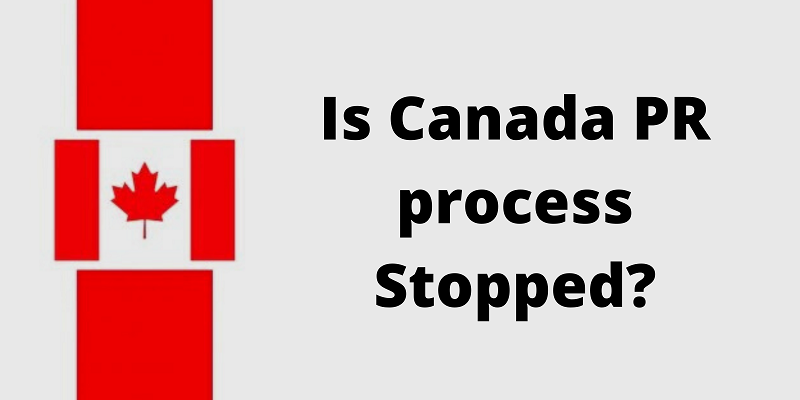The H-1B visa program allows foreign workers to come to the United States for employment, and it’s currently the most common type of employment visa in the country. In 2019, it was granted to more than 250,000 people, according to the U.S. Citizenship and Immigration Services (USCIS). However, in February 2018, the USCIS issued new rules that have set new standards and rules on H-1B petitions moving forward—both for companies that hire foreign workers and those who seek such visas themselves.
The 9 Fastest-Growing Job Categories
As technology evolves, some jobs will be made obsolete and others will be created. The good news is that all those new jobs require lots of different skill sets
—including people who have experience with a lot of different technologies. The chart below shows ten industries that are expected to grow rapidly over the next decade, along with at least one technology skill each will require.
If you want to learn more about these trends and how they might impact your career path, read on. (And if you’re already employed in one of these fields, watch out: Each list includes some great job-search resources.)
Cybersecurity Specialist
Cybersecurity experts are high-demand workers whose skills are in huge demand by both government and private companies. The Bureau of Labor Statistics forecasts that demand for information security analysts will grow 31 percent from 2016 to 2026, much faster than average.
(Source: BLS) Cybersecurity specialists typically need a bachelor’s degree, such as a bachelor’s degree in computer science or computer information systems, although many entry-level cybersecurity jobs do not require an advanced degree. Additional training in security certifications is also recommended, such as professional certification from (ISC)2 .
Penetration testers use their technical knowledge to evaluate networks and systems to find weaknesses that can be exploited by hackers. Pen testers work with clients to help fix vulnerabilities before malicious actors exploit them. Most penetration testers have at least a bachelor’s degree, and some employers prefer candidates who hold master’s degrees.
Some employers also prefer candidates who have completed penetration testing training courses offered through non-profit organizations like SANS Institute. IT Project Manager: An IT project manager helps organizations manage technology projects from beginning to end.
They usually have a background in either business or technology, but they must understand how each field works together.
Occupational Therapy Assistant
Much like physical therapy, occupational therapy is another form of rehabilitation. Occupational therapists (OTs) work to help individuals reach their highest level of functionality.
An occupational therapist can work with people who have suffered an injury or illness, as well as those who are experiencing challenges due to aging, mental health conditions and other forms of disability. Despite how it may sound, occupational therapists don’t just work with old people;
they also provide support to children and younger adults facing impairments or challenges that limit their daily activities. In many cases, OTs will use assistive technology along with their own expertise to help clients improve both physically and functionally.
Occupational therapists often work closely with other medical professionals, including physicians, nurses and physical therapists. The Bureau of Labor Statistics projects a 16 percent increase in employment opportunities for occupational therapists between 2016 and 2026.
Personal Financial Advisor
With a growing number of people managing their own finances, there’s a growing need for professional advice on investment planning, retirement planning and more. If you have experience in personal finance (or an interest in getting involved), you may be able to fill an important role as a financial advisor.
Financial advisors work primarily with high-net-worth individuals, which means they’re likely to be independent contractors rather than full-time employees. According to 2016 data from Transamerica Center for Retirement Studies, only 5 percent of financial advisors were employed full time by firms that provided investment services or insurance products.
Instead, most worked independently or with one of several different firms at any given time. The majority of financial advisors are self-employed, and about two-thirds work out of their homes. The field is highly competitive;
according to Transamerica Center for Retirement Studies, less than half (43 percent) of those who enter it will still be working in it after 10 years. But if you’re passionate about helping others manage their money—and can find your niche—this could be a great career choice for you.
Physical Therapist Aide
The aging of baby boomers, who are now reaching retirement age and beyond, is fueling a boom in nursing jobs. While traditional nursing roles involve direct patient care, there are emerging opportunities that offer indirect exposure to aging populations.
Health educators help prepare people with disabilities or cognitive disorders (such as Alzheimer’s disease) to live independently and be safely integrated into society.
This means they can help develop programs and activities to teach them how to safely go grocery shopping or cook their own meals, manage their money, use public transportation effectively and stay mentally active.
At more advanced stages of dementia, nurses may still provide personal care services, but not any sort of hands-on medical treatments like wound care or administering medications. Because of increasing demand, health educators should have no trouble finding work. Occupational therapists also play an important role in keeping older adults independent and safe at home by helping them continue doing daily tasks
—like bathing, dressing and eating—that might otherwise become difficult. However, unlike many other healthcare fields, occupational therapy jobs are expected to grow slower than average through 2022 because a lot of older adults have already taken advantage of these services over time.
Health Educator
A health educator, also known as a public health educator, focuses on one or more specific areas related to maintaining and improving public health.
The job can be very rewarding, but it’s not just about spreading important information; a strong public health educator should also be a good listener and able to collaborate with others. You may focus on nutrition, substance abuse, or general healthcare guidelines.
The position usually requires an advanced degree or credentialing—especially if you want to work at state or local levels—and you might find yourself delivering formal presentations on disease prevention at schools and community centers. There are many opportunities to specialize in other areas of public health including sexual education and AIDS awareness.
It’s important to note that many states require some sort of certification before you can practice as a health educator. That said, it is possible to land entry-level positions without certification and build your experience that way. Salaries tend to vary widely depending on where you live, but most educators earn between $40,000 and $80,000 per year.
Physician Assistant
In just over a decade, physician assistants have gone from being a rare breed to some of the most in-demand healthcare providers around. According to projections by BLS, there will be 13,200 new jobs created between 2016 and 2026
—that’s a projected annual growth rate of 17 percent. The American Academy of Physician Assistants (AAPA) projects that physician assistant services will increase by 35 percent within ten years, driven primarily by an aging population. Additionally, physician assistants are on-hand to fill any gaps left by shortage areas like primary care physicians and rural or low-income regions
—areas where their counterparts will not be readily available for decades. If you want to work in healthcare but don’t want to go back to school for at least another four years, becoming a physician assistant is your best bet.
While it’s important to note that not all states recognize PA as a medical provider, there’s still plenty of demand for PAs across all sectors—particularly those who want to work in primary care fields like family medicine and internal medicine. Plus, according to AAPA,
starting salaries range from $77K-$95K annually; so if you’re worried about having enough money coming into your bank account every month, going into business with a friend may not be such a bad idea after all!
Registered Nurse (RN), General Duty RN, and Psychiatric RN Sections
If you are a registered nurse, chances are good that you’ll have no problem getting PR. The Bureau of Labor Statistics predicts that job openings for nurses will increase by 16 percent between 2016 and 2026, which is much faster than average.
Additionally, Registered Nurses with a BSN degree or higher can apply for licensure as Advanced Practice Registered Nurses (APRN) after completing their respective education program and passing an exam. APRNs enjoy increased autonomy and greater flexibility to design treatment plans according to specific patient needs than General Duty RNs.
These positions require additional training beyond what is required for general nursing but still do not require a doctoral degree. These jobs pay well above average compared to other nursing positions and provide plenty of room for advancement.
Many employers also offer bonuses, benefits packages, and paid time off. Because APRN jobs involve significantly more responsibility than basic nursing roles, it’s important to find employment at hospitals or medical centers where you can build experience before attempting to start your own practice as an independent contractor.
Hospitals are always looking for experienced nurses who are ready to step up into leadership roles so if you have your eye on becoming a Nurse Manager or Director down the road then it’s important that you get your foot in the door now!
Respiratory Therapist
The respiratory therapy profession will have an even greater need for highly trained workers with bachelor’s degrees to meet rising demand from patients and their families.
Breathing has been taken for granted. People don’t think about it much until they start to have problems, says Matthew Schmitz, associate director of workforce analysis at PRSSA. It is just as important a job as being a doctor or nurse because if you can’t breathe, you can’t do anything else
.
In order to become a certified respiratory therapist (CRT), students must first complete either an associate’s degree program, which lasts two years and includes practical hands-on training, or a bachelor’s degree program that takes four years to complete. Both programs include classroom learning on topics such as anatomy, pathophysiology and pharmacology.
In addition, CRTs are responsible for maintaining certification by taking continuing education courses every five years. The Bureau of Labor Statistics estimates that job growth will be 21 percent between 2016 and 2026 due to advances in technology that are expanding healthcare accessibility and increasing demand for respiratory care services.
1 This opens up more career opportunities in hospital settings as well as outpatient clinics where specialists provide direct care for people with breathing problems like asthma and cystic fibrosis.
Phlebotomist
The Bureau of Labor Statistics predicts that phlebotomists will have one of the fastest-growing job prospects, with a projected increase of 36% by 2026. Phlebotomists draw blood and take samples from patients for clinical lab tests.
According to BLS, phlebotomy is an especially good fit for people who like both science and working with their hands. Many schools offer training programs that can qualify you to apply to state boards or become certified on your own by an industry organization. Median pay is $33,920 per year. Learn more about becoming a phlebotomist here.
If you want real information from AVS Immigration and real news then visit our website and follow us on social media.






















